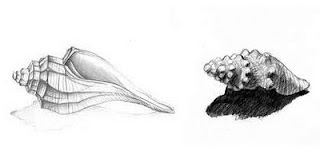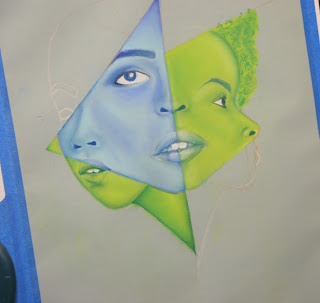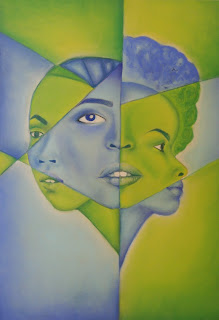Advanced Drawing and Painting
We will be looking at works of art by Pablo Picasso in the next couple of weeks. I first fell in love with the work of Picasso when I was in Barcelona and visited the Picasso Museum. Up until then I hadn't realized that as a teenager he was painting stunning realistic oil paintings, rendering fabric like Da Vinci. I always thought of Cubism when I thought of Picasso, not realism. My limited exposure to Picasso didn't make me feel like he was an artist that I needed to discover more about...was I wrong. His work was constantly evolving...his critics and the world loved him for that.
At the age of 76 Picasso said,
"Everything I have done is just the first step on a long path. It is only a preliminary process, which must be developed much later on. My works must therefore be considered each in relation to the others, always taking into account what I have done and what I am going to do."

 Study your shell. Observing the object you are drawing is crucial. Take your time, settle in. There are many ways to begin a drawing. You could very quickly draw a light sketch representing the "skeleton" of your shell using shapes. You could choose to draw gesture-like lines to represent the overall shape of the shell. Another option is to create a contour drawing of the shell. What are you comfortable doing? Try beginning in a variety of ways it is up to you. You can start to add darker values after you feel you have the shape of your shell represented correctly on the paper.
Study your shell. Observing the object you are drawing is crucial. Take your time, settle in. There are many ways to begin a drawing. You could very quickly draw a light sketch representing the "skeleton" of your shell using shapes. You could choose to draw gesture-like lines to represent the overall shape of the shell. Another option is to create a contour drawing of the shell. What are you comfortable doing? Try beginning in a variety of ways it is up to you. You can start to add darker values after you feel you have the shape of your shell represented correctly on the paper. 








